The Outdoors will change your life, making you happier, and more relaxed, with better overall health, and with stronger relationships. If we could package the benefits of the outdoors into a pill, it would be one of the most powerful pharmaceuticals on the planet. Alas, we can’t make a pill out of the outdoors, but a few hours a week will change your life.
As kids, we were always encouraged to go and play outdoors – since when did our enthusiasm fade? If outdoor exploration is so crucial for the younger generation, why have we abandoned that mindset? Spending time outside, exploring the world is a wonder drug – the benefits extend beyond mental and physical well-being to improved creativity, strengthened relationships and increased productivity. Nature is a powerful remedy, perhaps a universal antidote for life’s challenges.
Transformative and accessible, it’s about time we return to the wilderness – the advantages are simply too great to ignore. In this article, we explore the benefits of outdoor exploration and travel, like hiking, walking, cycling, touring and more. Join us on this journey as we uncover the number of ways nature can enhance our well-being.
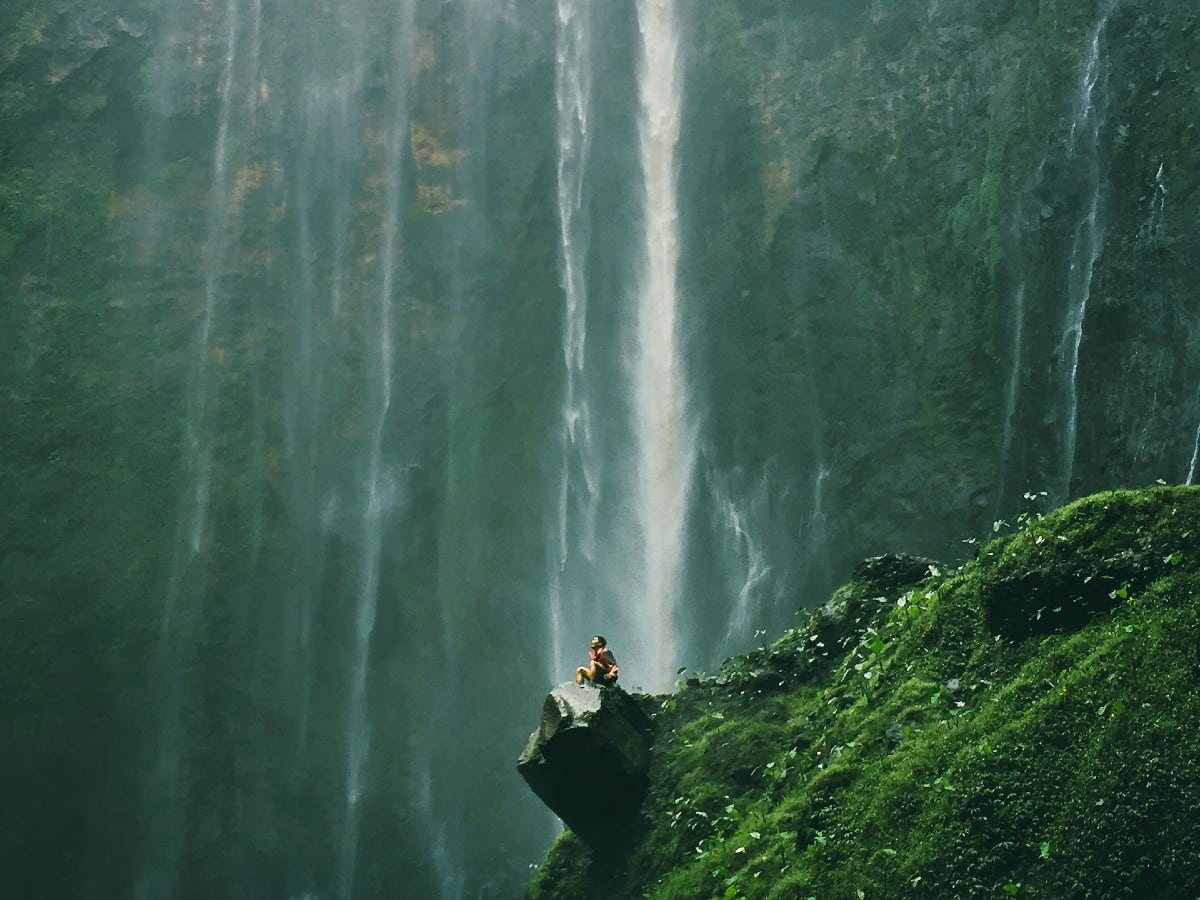
How Outdoor Exploration Improves Physical Health
The connection between our welfare and nature is no coincidence. There exists a positive correlation between outdoor activities and our physical health. Whether you’re hiking, biking or travelling the globe, our bodies have a response to the natural world.
One significant advantage pertains to heart health. Clinicians have long recommended walking as prevention and treatment for patients diagnosed with cardiovascular disease as the unhurried activity has positive effects on blood lipid levels and blood pressure, promoting cardiovascular health among other benefits (Mersy 1991). Because walking is a low-impact aerobic exercise and doesn’t require any specialized equipment, it’s accessible to people of most age groups and fitness levels. No booking or planning is needed – just lace up those walking shoes and head for the trails!
The frequency of exercise also plays a crucial role in the physical rewards, and multi-day experiences – like backpacking trips or pilgrimages – encourage repeated movement without too much demand. Sustained exercise offers a variety of physical advantages, in fact, the University of Washington discovered that women who walk more than 7.5 miles per week exhibit a higher average bone density throughout their body, compared to those who walk less than 1 mile per week (Dawson-Hughes & Krall 1994). In addition to the skeletal benefits, exploring irregular terrain, climbing and descending will build muscle strength, endurance and improve your balance without overloading your joints (Bilodeau, 2022).
Our body is our home and our means of transportation, so we must prioritize the maintenance of our health. Active adventures like hiking and walking allow us to enjoy the physical benefits of movement without the harshness of high-intensity strength and conditioning workouts. The low-impact nature of these activities avoids straining ligaments, tendons, and muscles, unlike the potential stress associated with typical strength training – posing a minimal risk of injury while encouraging an elevated heart rate. Don’t get us wrong, we aren’t asking you to abandon your typical workout routine, but instead, we challenge you to incorporate some fresh-air activities into your regime.
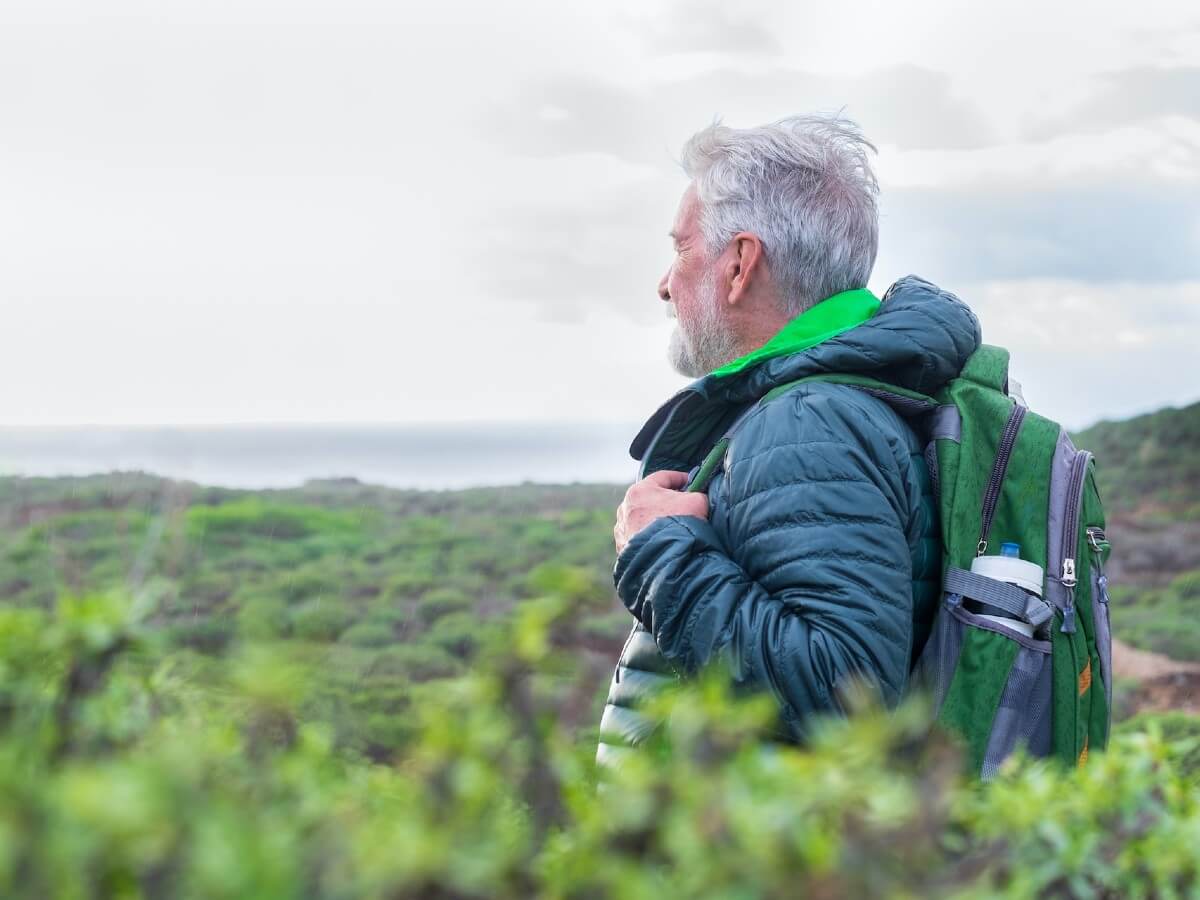
The Benefits of Open-Air Activities for Our Mental Health
Outdoor exploration and travelling also play an important role in mental well-being. With rising rates of depression and anxiety, we must nurture our mental health, and nature can help. Numerous researchers have found evidence that exercise and outdoor exploration can improve our mental health; for example, consistent outdoor walks can reduce the risk of depression and improve depressive symptoms (Jordan, 2016). Engaging in exercise also triggers the release of dopamine and serotonin, hormones associated with our happiness and pleasure, which in turn, reduces our stress levels and contributes to our overall mental well-being (Heijnen et al., 2015). There’s just such an indescribable quality to being outdoors – “I could never explain why I had such joy when I got to go on a trekking or a cycling holiday; all I knew was that I just felt ‘right,’ and was full of happiness and joy.” Richard Campbell.
Over the past few years, more and more people have opted for adventure-based vacations, as these expeditions offer a respite from the distractions of everyday life, urging you to be fully present and appreciate every step toward achieving a goal—whether it’s summiting a mountain or savouring a glass of vino at the end of a long day cycling through the Italian countryside.
While the outdoors and active activities are not a panacea for all our ailments, there is no doubt that they can improve our mental well-being. Open-air experiences are rejuvenating and restoring, even if tiring and challenging. Richard Campell captures the sentiment perfectly: “When I’m on the trail I have such a simple life. No appointments, emails, meetings, or jobs. I just eat my food and trek to the next hut or campsite. It just feels great, and somehow after a gruelling week of backpacking, I come back completely refreshed.”
Out on the trails, we aren’t burdened by meetings, calls, emails or to-do lists, instead, we’re present, embracing and acknowledging the natural world that surrounds us. While the convenience of technology is undoubtedly beneficial, it can also be harmful – being connected at all times isn’t necessarily a good thing.
Being outside just feels right, don’t you agree? Well, it might be because active outdoor pursuits tap into our instincts. In 1984, a Harvard biology professor presented the “biophilia hypothesis” suggesting that humans have an intrinsic inclination to seek connection with nature, and other forms of life (Wilson, 1984). As humans, we are inherently wired for the wilderness and activities like hunting, gathering, exploring and fending for ourselves. This impulse might contribute to the sense of calm and ease many of us experience while outdoors: “I grew up on a farm, and there is something that just feels right working hard outdoors. I think of how humans have spent tens of thousands of years evolving to work hard and spend most of our time outdoors, and at least for me I find that my body craves time outdoors, that it’s a natural part of how I am meant to live.” (Richard Campbell).
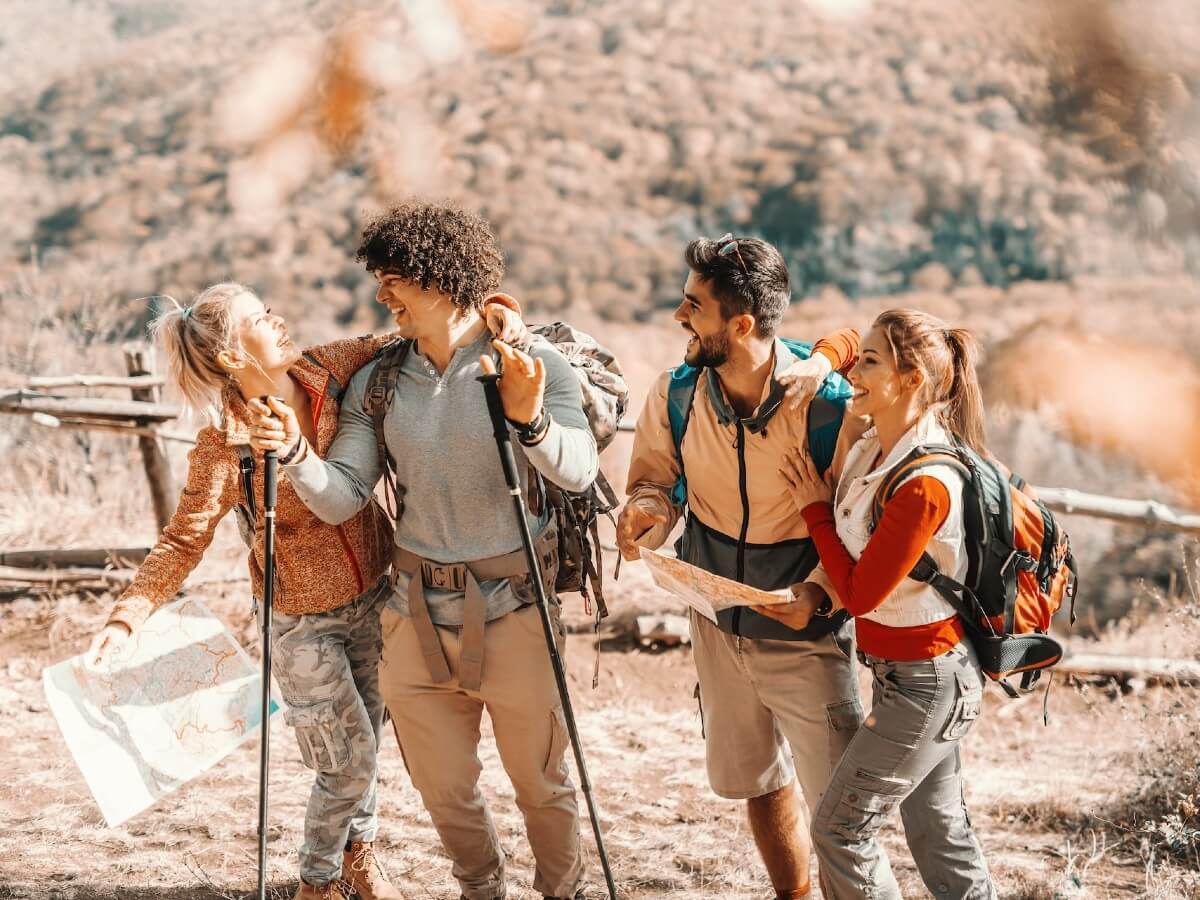
How Nature Nurtures Connection
Outdoor adventures not only bond us with our instincts but also with individuals. Active travel and experiences allow us to disconnect to foster reconnection – it’s a paradox. Adventuring and travelling promote the discovery of new destinations with your family and friends without the distractions of the “real world”. Uninterrupted contact can reveal unknown dimensions in relationships – unlocking a new level of intimacy.
Think about it, when was the last time you caught up with a friend without the distraction of your phone or enjoyed a meaningful conversation with your kids without the nag of video games or screen time? Imagine this – you and your loved ones have embarked on a 7-day adventure, exploring a new environment, experiencing a new culture and meeting new people. The absence of phones stimulates great chats and the added challenge of navigating an unfamiliar location encourages cooperation. In fact, it’s been proven that when individuals find themselves facing a challenge or stressor, it induces a “tend-and-befriend” response, which fortifies bonds that are a contributor to our happiness (von Dawans et al., 2012).
Healthy friendships and relationships are key to our satisfaction, and participation in active adventure is a wonderful way to strengthen relationships. Studies show that it takes about 50 hours of time with someone before you consider them a casual friend, 90 hours before you become friends, and about 200 hours to become close friends (Hall 2019). Cultivating meaningful friendships requires more than just being in close proximity; it involves intentional, quality time together. What better way to invest in those hours than through undisturbed exploration, like a hike or bike ride?
Shared experiences have the added bonus of great stories and the heartwarming “do you remember when” moments when a funny anecdote from a previous trip or backcountry backpacking tour resurfaces. These are the stories and experiences that form strong connections and keep us coming back for another adventure. In fact, that’s how 10Adventures came to fruition – “My goal at 10Adventures is to help you make memories with the people you love. Memories that end up as the photos on your wall and the stories you reminisce about at the dinner table.” (Richard Campbell).
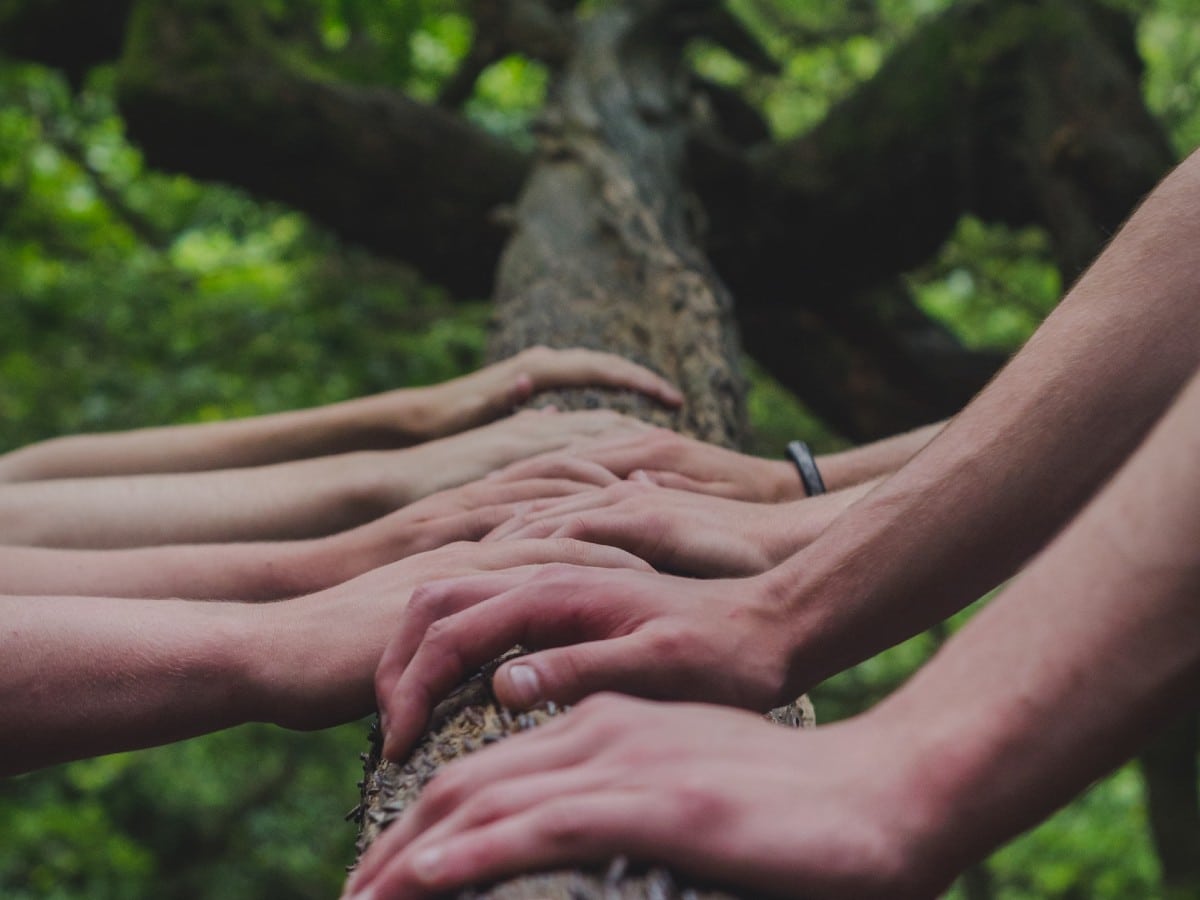
Jumpstart your Creativity with Active Adventures
You know the saying “Get those creative juices flowing”? Well, active adventure does just that. Creativity and inspiration can be found outside as nature fuels and unlocks various parts of our brains. Don’t you feel better after spending time outside? Whether you wander through the woods or hike up a hill, there’s something transformative about the great outdoors.
How often have you solved a problem or conceived a big idea while exercising, or on your daily walk? It happens all the time, right? There’s a scientific explanation for it. Researchers have shown that walking increases blood flow to the brain, enhancing productivity, creativity and the ability to articulate ideas more effectively (Oppezzo & Schwartz, 2014). This practice holds such merit that entrepreneurs like Steve Jobs and Mark Zuckerberg have been known to conduct meetings while walking.
Studies have also demonstrated that individuals who spend more time outdoors experience elevated problem-solving abilities, and overall cognitive function, supporting the notion that it is wise to disconnect regularly and allow your brain to reset while surrounded by nature (Atchley et al., 2012). So maybe next time you’re stuck in a cycle of procrastination, entangled in a problem, or need to boost your creativity, take a step outside.
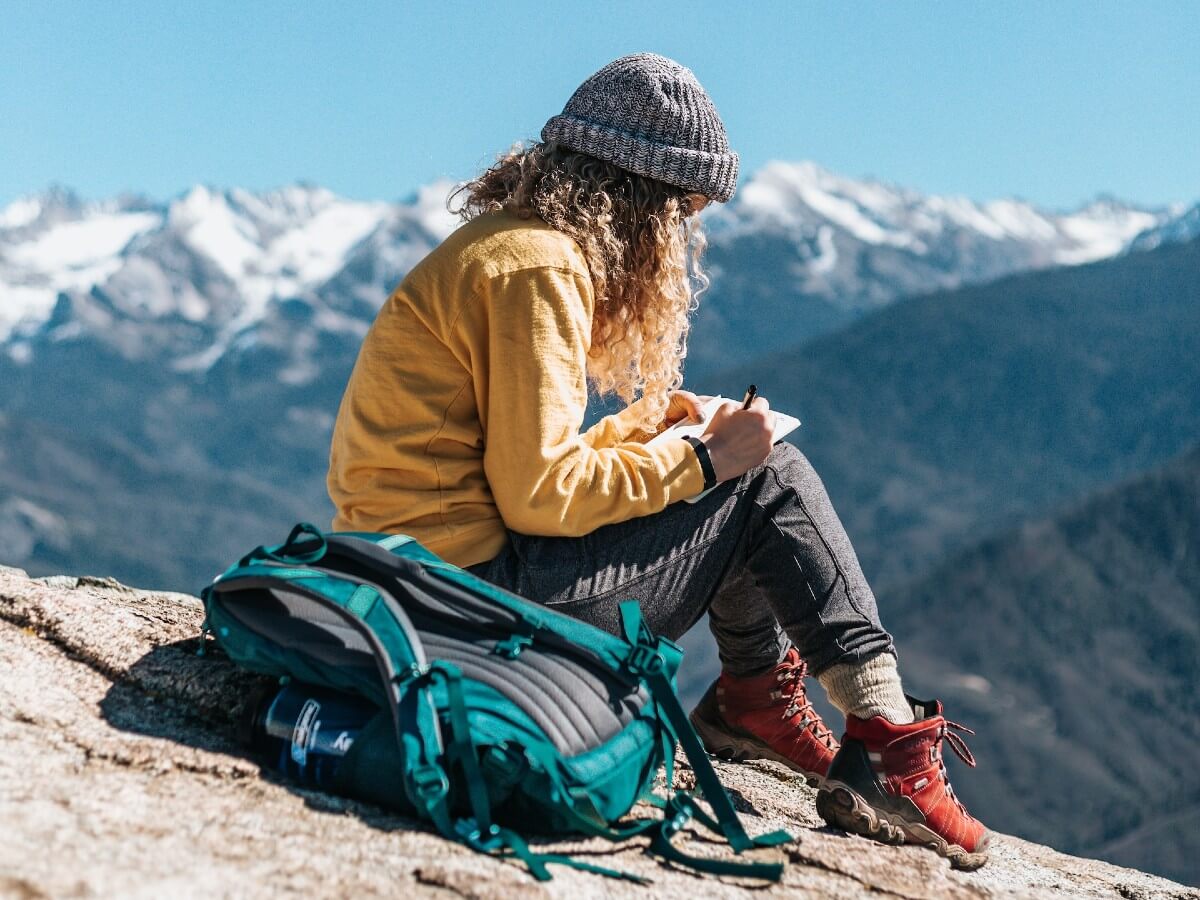
The World is our Classroom
Engaging in outdoor physical activity not only sparks creativity but also promotes learning through the exploration of new locations during active adventures. We firmly believe that the world is our classroom, and travelling provides unparalleled education. As the great Mark Twain once said:
“Travel is fatal to prejudice, bigotry, and narrow-mindedness, and many of our people need it sorely on these accounts. Broad, wholesome, charitable views of men and things cannot be acquired by vegetating in one little corner of the earth all one’s lifetime.”
While we are big proponents of adventure travel, simply exploring new cities, countries, cultures and environments challenges our preconceived assumptions. Next time you find yourself somewhere new be sure to savour the local cuisine, embrace traditions, learn more about the history and enjoy an alternate lifestyle – something varied from your day-to-day life. By immersing yourself in other cultures you’ll enjoy a new perspective, which encourages empathy and inspires a deeper understanding of humankind.
The holistic benefits of an active lifestyle in the great outdoors are abundant; whether you’re an intrepid explorer or novice hiker, simply stepping outside offers physiological and psychological benefits. As the founder of 10Adventures says, “Let me get a person into the backcountry for a week, and it’ll change their life. These trips are addictive – perhaps the only positive addiction one can have.” Nature is our natural medicine, and we need the correct dosage.
The combination of improved physical health, mental well-being, fortified bonds, and endless learning through outdoor pursuits results in a more joyful, more balanced lifestyle. In fact, a recent study published in the Journal of Tourism Analysis studied the link between frequent travel and happiness and noted a remarkable 7% increase in overall life satisfaction compared to those who travelled less (Chen et al., 2021). So what are we waiting for?
To quote Mark Twain once again, it’s time to “throw off the bowlines, sail away from the safe harbor, catch the trade winds in your sails. Explore. Dream. Discover”.
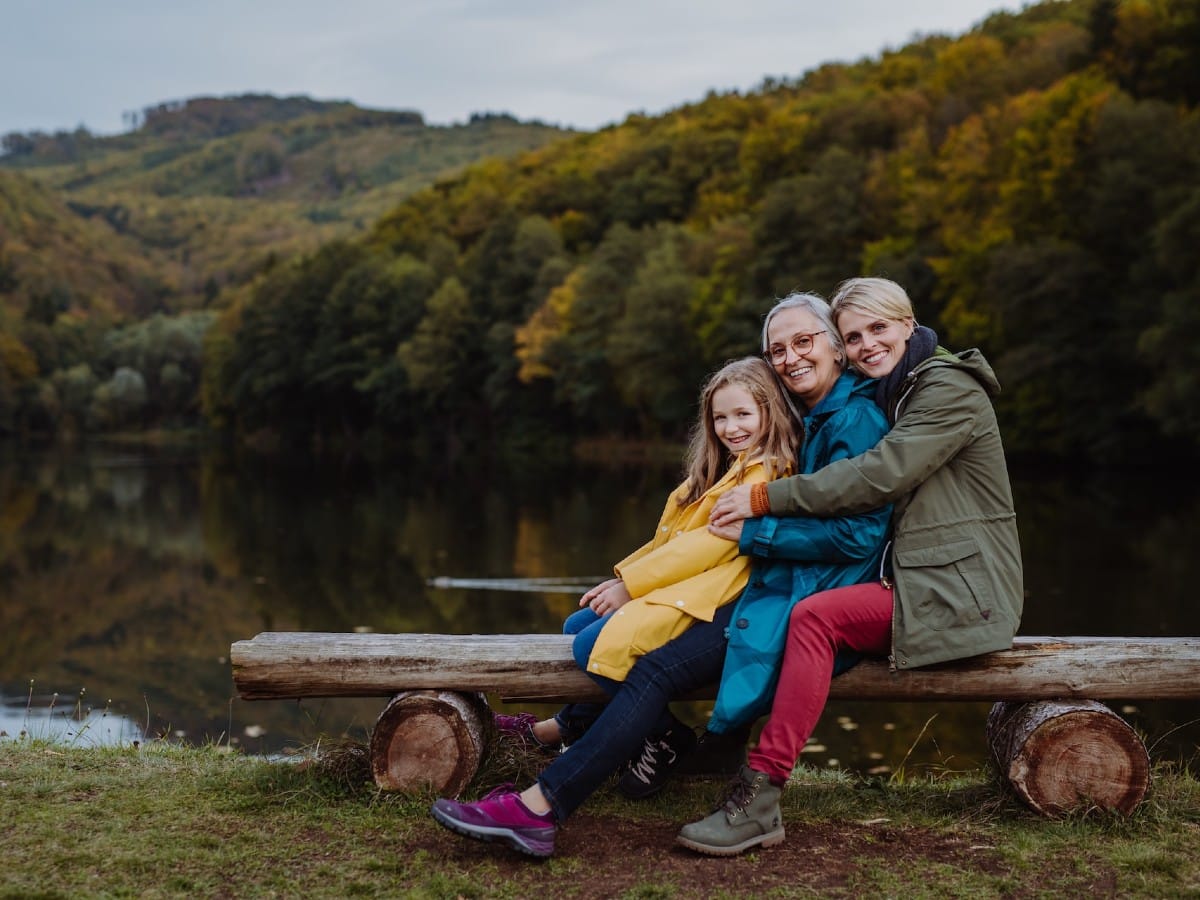
Health and Fitness Articles
Are you looking to improve your overall health and fitness while also spending time enjoying the beauty of the outdoors? Whether you are a beginner hiker or a seasoned outdoor enthusiast, there is no time like the present to get out on the trails and live a healthier lifestyle. To help you turn those New Year’s resolutions into a healthy habit you will stick to, we’ve written some articles that will help you achieve your goals for the upcoming year!
Guides for Beginners
Hiking First Aid Kit: Stay Safe in the Backcountry!
How to Prevent and Treat Muscle Soreness and Blisters
Backpacking Hydration Tips
How to Adventure Safely in the Age of Extreme Weather
Training for the Outdoors
Training from Home for the Future Hike
Training for your First Backpacking Trip
Couch to Mountain Top: Expert’s Training Guide for Hikers
Health Articles
The Benefits of Hiking
5 Great Steps to be Healthy
10 Tips to Eat Right
Why the Outdoors Benefit Mental Health
Why the Outdoors is the Best Way to Get Physically Healthy
References
Atchley RA, Strayer DL, Atchley P (2012) Creativity in the Wild: Improving Creative Reasoning through Immersion in Natural Settings. PLoS ONE 7(12): e51474. https://doi.org/10.1371/journal.pone.0051474
Bilodeau, K. (2022, March 1). Hike your way to better health. Harvard Health. https://health.harvard.edu/staying-healthy/hike-your-way-to-better-health
Chen, C.-C., Zou, S. (Sharon), & Petrick, J. F. (2021). Would you be more satisfied with your life if you travel more frequently? Tourism Analysis, 26(1), 57–63. https://doi.org/10.3727/108354220×16072200013427
Hall, J. A. (2019). How many hours does it take to make a friend? Journal of Social and Personal Relationships, 36(4), 1278-1296. https://doi.org/10.1177/0265407518761225
Mersy DJ. Health benefits of aerobic exercise. Postgrad Med. 1991 Jul;90(1):103-7, 110-2. doi: 10.1080/00325481.1991.11700983. PMID: 2062750.
Heijnen, S., Hommel, B., Kibele, A., & Colzato, L. S. (2015, November 23). Neuromodulation of aerobic exercise-A Review. Frontiers. https://www.frontiersin.org/articles/10.3389/fpsyg.2015.01890/full
\Jordan, R. (2016, April 9). Stanford researchers find mental health prescription: Nature. Stanford News. https://news.stanford.edu/2015/06/30/hiking-mental-health-063015/
Krall, E. A., & Dawson-Hughes, B. (1994). Walking is related to bone density and rates of bone loss. The American journal of medicine, 96(1), 20–26. https://doi.org/10.1016/0002-9343(94)90111-2
Oppezzo, M., & Schwartz, D. L. (2014). Give your ideas some legs: The positive effect of walking on creative thinking. Journal of Experimental Psychology: Learning, Memory, and Cognition, 40(4), 1142–1152. https://doi.org/10.1037/a0036577
von Dawans B, Fischbacher U, Kirschbaum C, Fehr E, Heinrichs M. The social dimension of stress reactivity: acute stress increases prosocial behavior in humans. Psychol Sci. 2012 Jun;23(6):651-60. doi: 10.1177/0956797611431576. Epub 2012 May 16. Erratum in: Psychol Sci. 2012 Jul 1;23(7):829. PMID: 22593119.
Wilson, E. O. (1984). Biophilia. Harvard University Press.
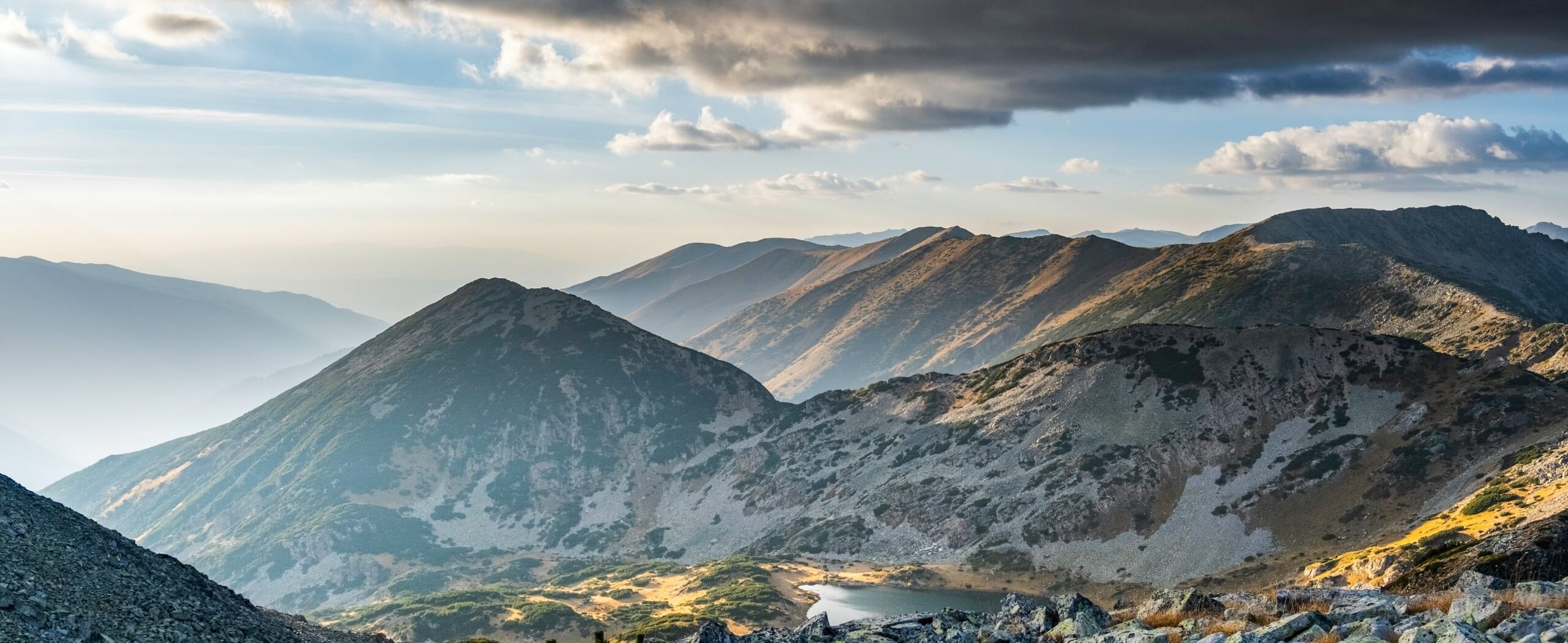
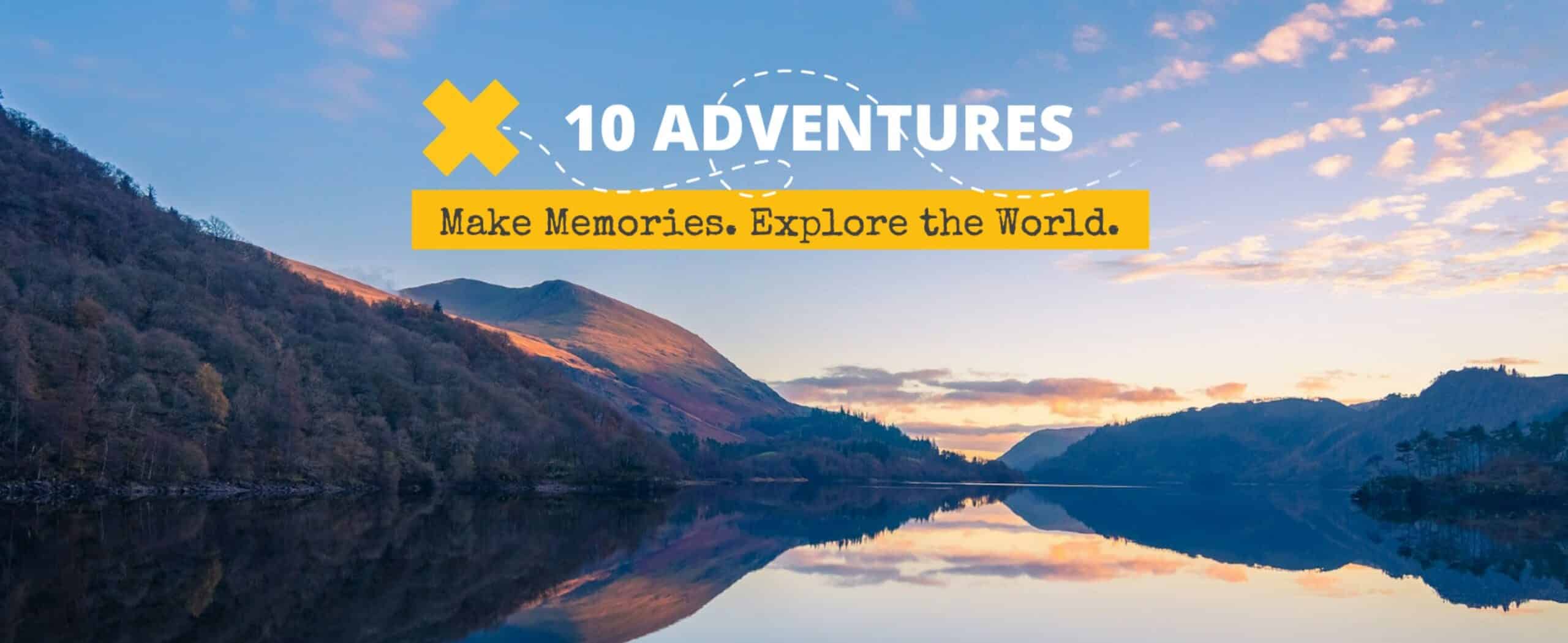

Comments